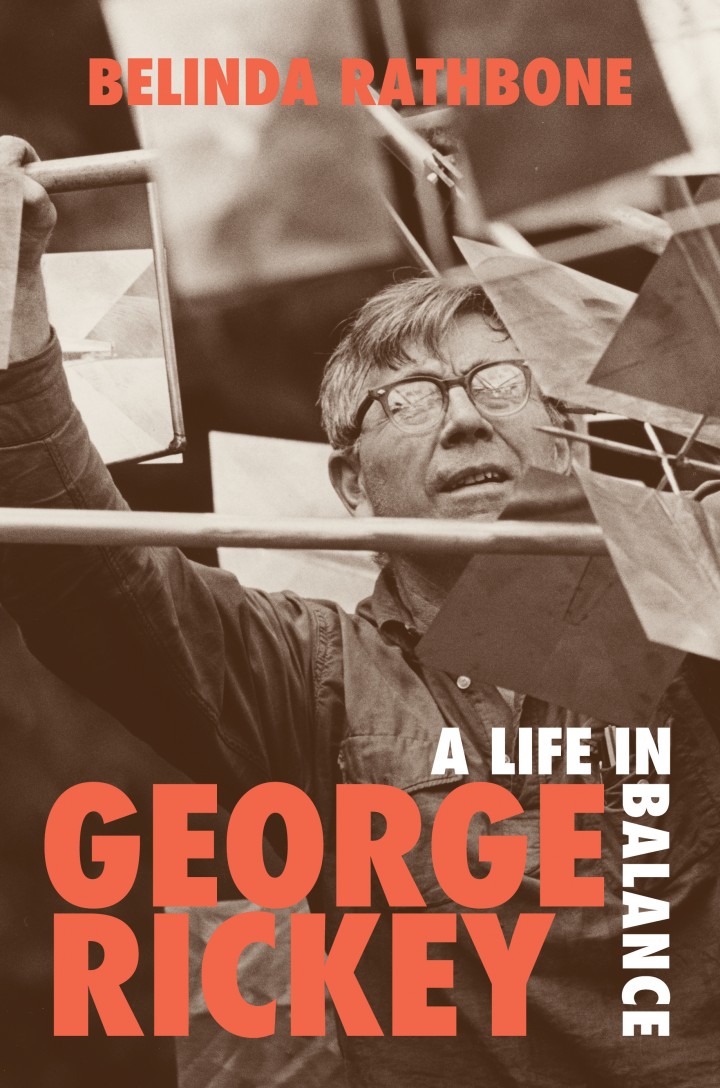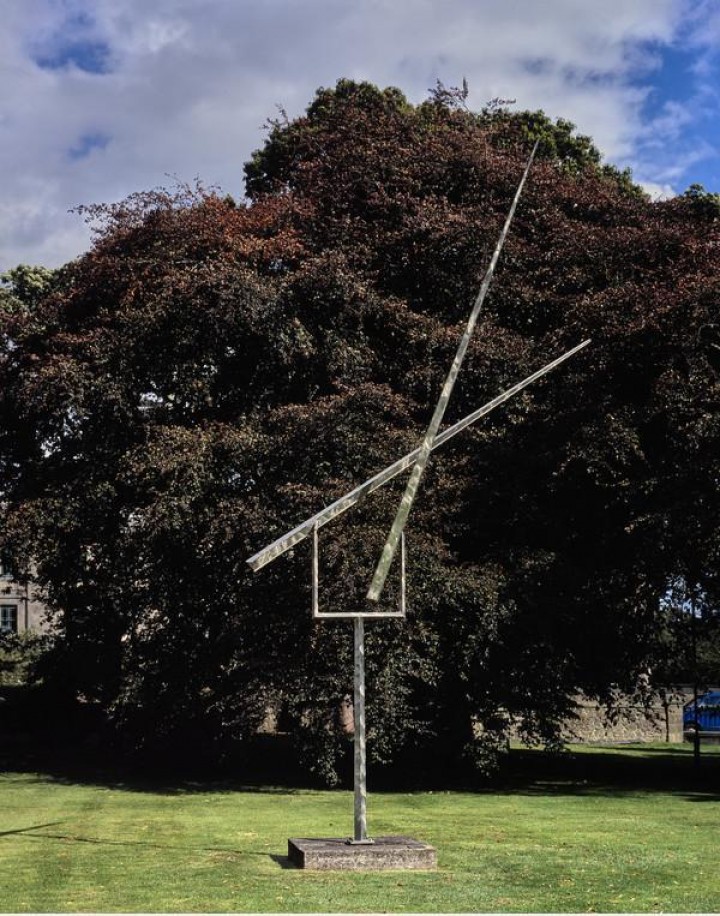Scottish Art News
Latest news
Magazine
News & Press
Publications
George Rickey: A Life in Balance
By Jeremy Harvey, 21.12.2021

Belinda Rathbone's biography of the pioneering kinetic sculptor George Rickey (1907 – 2002) starts in Scotland, when Rickey is five. His father has just moved his family to Helensburgh from where he manages the Singer Sewing factory in Clydebank.
The influence of Rickey's Scottish upbringing is life-long. Rathbone pays particular attention to his time at Glenalmond College, a private boarding school in Perth and Kinross. Cold daily dunkings and a Spartan regime were commonplace at the school. Although ambidextrous, Rickey was made to write right-handed, but remained left-handed when making. Rickey's history master and mentor, George Lyward, was an important, formative influence. Lyward challenged, demanded and expected great things. Rickey credits Lyward's support as instrumental in getting him to Balliol College, Oxford and giving him 'the courage (or sense of adventure) to become an artist.' They later became close friends.
It was through researching Lyward for a doctoral thesis that I got to know Rickey. He replied to my request for information about Lyward and we corresponded at length. Rickey invited my wife and I to see him in the States. He was 83, hospitable, highly creative and cultured. He arranged educational visits, lent us his New York flat and had us visit Glenalmond. Rathbone's biography is filled with similar stories taken from interviews and archives, which capture Rickey's generosity, humility and many-sidedness.
 Belinda Rathbone, 'George Rickey A Life in Balance', Godine, Boston US, 2021.
Belinda Rathbone, 'George Rickey A Life in Balance', Godine, Boston US, 2021.
After detailing this time studying Oxford, the biography is divided into two unequal parts either side of WWII: 1928 -1940s, and then from 1947 onwards. Pre-WWII Rickey studied painting in Paris first with L’Hote and then at the Academie Moderne with Leger. He then settled in America, painted and taught history at Groton, then art at Olivet and other colleges. Drafted into the US Army Air Corps with an unusual mechanical aptitude, he trained B29 gun crews at Laredo, rose to Sergeant, and found another side of himself. Playing with metal and wire he started making 3D objects. Aware of Alexander Calder’s mobiles, he chose instead to explore movement with metal sculptures. In time, he began making kinetic steel sculptures that responded to wind and light. He was drawing on inherited mechanical and engineering skills, undecided about his way forward.
The second part of the biography puts great emphasis on the transformational impact of Rickey's marriage to Edie Leighton, his second wife, in 1947. Edie was at the heart of Rickey's switch to sculptures. Rathbone gives equal importance to her, his larger-than-life secretary, a gifted, much younger, hardworking business partner, who could become ‘high camp’, outrageous and out of order. Their marriage had depth and drama but ended in loss from addiction and separation. This is sensitively handled.
Although Rickey settled in America he returned to Scotland when he could. The most poignant visit was for his 75th birthday, in 1982 when he travelled with his family to Glasgow for his first UK retrospective held at Glasgow's Custom House Quay. The city's Lord Provost honoured Rickey with an official welcome and a ceremonial key to the city. The retrospective coincided with the first ever visit by a pope to Scotland. Rickey responded by creating Papal Cross, a large sculpture of four moving L’s arranged as a cross. He gave this to the city along with Three Right Angles Horizontal (Triple L). He was later disappointed when Papal Cross and Triple L were badly damaged. Triple L was restored in 2020 and is now placed in Queen’s Park duck pond. Papal Cross was not replaced.
 George Rickey, Two Lines up Excentric VI, 1977. National Galleries Scotland. © Estate of George Rickey.
George Rickey, Two Lines up Excentric VI, 1977. National Galleries Scotland. © Estate of George Rickey.
In Edinburgh there is a piece commissioned in memory of the landscape designer, Maggie Keswick, at the Maggie Centre. Two Lines Up Excentric VI was gifted to the SNGMA in Edinburgh in 1982 to follow Two Lines Fixed Three Lines Moving (1970). There are also One Rectangle Excentric (1998) at Stirling University and Three Squares Giratory (1972) at Glasgow University.
Rickey made some 3000 sculptures and their invention and variety are well covered by Rathbone. His kinetic pieces are best seen rather than described and the book would benefit from more illustrations. However, this biography, much like the artist's sculptures, is a wise, balanced and enjoyable creation, capturing Rickey's life and character with a light, sure touch.
Belinda Rathbone, 'George Rickey A Life in Balance', Godine, Boston US, 2021. Available for $40.
Currently nine sculptures by George Rickey are on display thanks to Kasmin Gallery along Park Avenue, New York until May, 2022.




